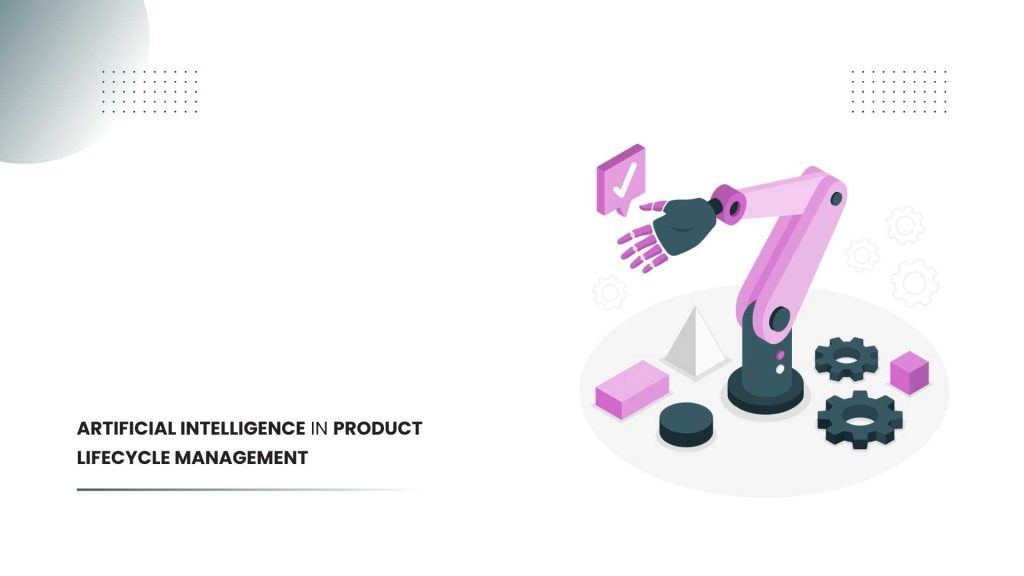Artificial Intelligence (AI) is a transformative solution in business product management. One sector where AI is having a profound impact is Product Lifecycle Management (PLM). PLM is a vital business function that steers a product throughout its lifecycle, from inception to discontinuation and is currently undergoing a revolution with the integration of AI. We will explore AI in PLM, outlining its benefits and challenges.
Artificial Intelligence (AI) is of utmost importance in Product Lifecycle Management. It involves leveraging machine learning algorithms to scrutinize data connected to the product development cycle.
By automating manual tasks, recognizing patterns, and making informed decisions on product design, manufacturing, and distribution, enterprises can greatly benefit from AI. AI also enables companies to predict product demand, identify potential issues in the initial stages of product development, and optimize resources for better outcomes.
5 Ways AI Will Change PLM
Requirements Management and Traceability
Managing requirements is a vital component of the product development process, encompassing the collection, analysis, and definition of the needs and expectations of a product’s end-users.
Integrating natural language processing and the capacity to summarize extensive information from documents, videos, and other data sources can offer significant advancements for the tools used in requirement management and validation in Product Lifecycle Management software.
Reuse of Data for Faster New Product Development
Ensuring data reusability is crucial for optimizing product development. It allows companies to avoid redundant efforts and minimize costs. Engineers often create new parts simply because they need more awareness of existing ones.
By harnessing the power of AI-driven data management systems, businesses can effectively analyze large volumes of data from various sources. This analysis helps identify patterns and relationships to be leveraged for reusability in new projects.
Companies can streamline product development by incorporating configurable design, Bill of Materials, and supplier reusability. Implementing reusability patterns in New Product Development (NPD) projects enables informed decision-making based on historical data.
Virtual Assistance and Customer Support
AI offers immense potential to enhance various aspects of Product Lifecycle Management that involve human interaction with predefined patterns and optimization algorithms. This includes virtual assistance in planning meetings, organizing tasks, and scheduling approvals.
AI can automate the change management process, eliminating the need for traditional workflow tools the change control board (CCB) uses. In maintenance projects and customer support, AI tools can provide interactive manuals and intelligent assistance to aid in task execution or automation. Overall, AI can revolutionize these areas of Product Lifecycle Management, improving efficiency and effectiveness.
User Experience
The UI/UX components of Product Lifecycle Management systems have long been subject to ongoing scrutiny. There is a significant need to streamline UX and enhance the usability and comprehensibility of tools.
Introducing AI into the UI/UX realm of Product Lifecycle Management systems can introduce innovative solutions to better comprehend issues and simplify UI elements.
This may involve transforming the UI into a conversational interface, incorporating speech recognition. And other methods to enhance efficiency and streamline user interactions.
Planning Intelligence
AI has the potential to enhance the significance of Product Lifecycle Management technologies by facilitating strategic planning across intricate configurations, supply and demand, and portfolio optimization.
AI can suggest avenues to streamline product design, supplier selection. And other critical factors through machine learning algorithms adapt at processing vast datasets and integrating design and customer insights.
This capability empowers engineers to refine product strategies and bolsters companies’ capacity to seize emerging opportunities. And maintain a competitive edge.
Conclusion:
Integrating Acumatica ERP systems into the Product Management Life Cycle offers significant advantages for businesses in their approach and execution of product development. ERP systems provide a comprehensive data-driven framework that enhances collaboration, optimizes resource utilization, and improves overall efficiency.
In today’s dynamic markets, adopting ERP in product management is not just an operational decision but a strategic imperative. Leveraging ERP systems’ capabilities at each stage of the product management life cycle enables organizations to foster innovation. Accelerate time to market, and ultimately attain sustainable success in a highly competitive business environment.

Vijay comes with a vast experience in ERP and enterprise solutions space with about 20 years of experience in various packaged application like Acumatica, SAP, Orion, Salesforce.com, SugarCRM and, SalesLogix.

